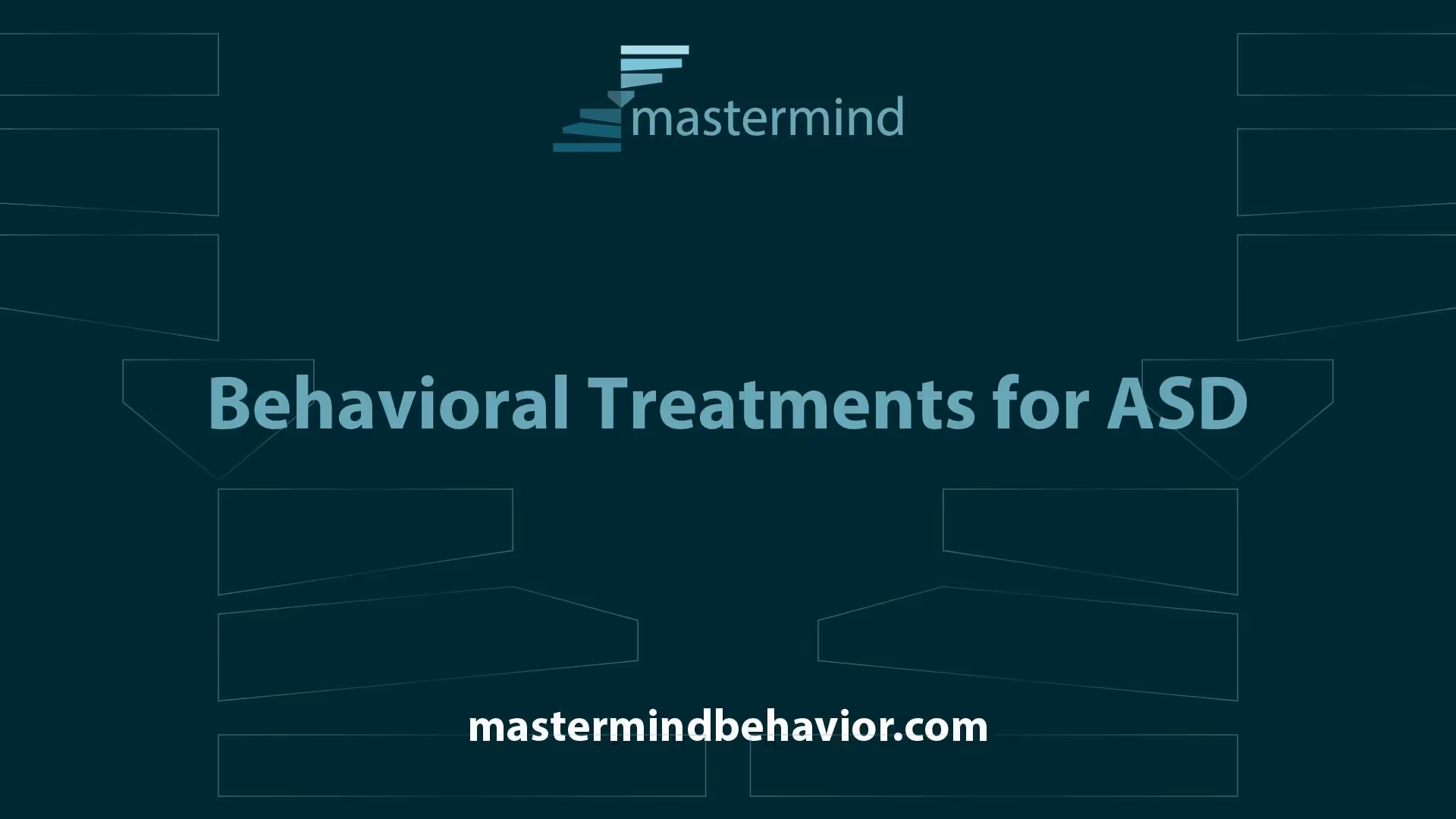
Understanding Autism Spectrum Disorder
Definition and Diagnosis
Autism Spectrum Disorder (ASD) is a neurological and developmental condition that affects how individuals interact with others, communicate, learn, and behave. It is known as a "spectrum" disorder due to the wide range of symptoms and their varying severity experienced by different individuals. People of all genders, races, ethnicities, and economic backgrounds can be diagnosed with ASD. Symptoms generally appear within the first 2 years of life, although diagnosis can occur at any age.
The diagnosis of ASD often involves evaluating an individual's behavior and development, with most cases reliably diagnosed by age 2. The typical diagnostic process includes general developmental screening during well-child checkups, followed by a more detailed evaluation if specific developmental differences are observed. Early detection is crucial for the timely initiation of treatments and services needed to support the individual.
Key Features of ASD DiagnosisDescriptionAge of DiagnosisOften diagnosed by age 2Diagnosis ProcessGeneral developmental screening followed by detailed evaluationImportance of Early DetectionCritical for timely access to treatment and support
Symptoms and Characteristics
Individuals with Autism Spectrum Disorder may experience a variety of symptoms that affect their social interactions, communication skills, and behaviors. The disorder encompasses previously distinct conditions such as autism, Asperger's syndrome, childhood disintegrative disorder, and unspecified pervasive developmental disorder.
Some common symptoms and characteristics of ASD include:
Common Symptoms of ASDDescriptionSocial Interaction ChallengesDifficulty in engaging with peers and understanding social cuesCommunication DifficultiesProblems in expressing oneself verbally or interpreting the communication of othersRepetitive BehaviorsEngaging in repetitive movements or insisting on sameness in routines
The wide range of symptoms and varying levels of intensity contribute to the complexity of Autism Spectrum Disorder, making each individual's experience unique. Understanding these aspects of ASD is essential when discussing its connection to mental health disorders.
Early Intervention for Autism

Early intervention is vital for children diagnosed with Autism Spectrum Disorder (ASD). It involves prompt diagnosis and customized treatments aimed at improving long-term outcomes.
Importance of Early Diagnosis
Early diagnosis of autism is essential as it allows for timely intervention. Studies indicate that early diagnosis can lead to major long-term positive effects on symptoms and later skills. Autism spectrum disorder can often be identified in children as young as 2 years old, and interventions before preschool age (around 2 or 3 years) are particularly effective due to the brain's plasticity during this developmental stage.
Recent guidelines recommend initiating integrated developmental and behavioral interventions as soon as ASD is suspected or diagnosed. The earlier a child receives assistance, the higher the chances of learning and making progress [3].
The following table summarizes the benefits of early diagnosis:
Age of DiagnosisPotential BenefitsBefore 2 YearsHigher likelihood of significant progress by school age; effective use of brain plasticity2 to 3 YearsIntervention strategies can be tailored; children often show improvement in social skills and communicationAfter 3 YearsProgress may still be made, but typically less effective than interventions started earlier
Therapeutic Interventions
Once diagnosed, children with ASD can benefit from various therapeutic interventions that focus on their specific needs. Treatments should address individual characteristics, as symptoms can overlap with other disorders such as attention deficit hyperactivity disorder (ADHD). Common therapeutic options include:
Each state offers its own early intervention program for children with developmental delays, including ASD, as mandated by Part C of the Individuals with Disabilities Education Improvement Act of 2004. Such structured support systems facilitate access to necessary resources and therapies essential for a child's growth and development.
With early intervention, some children with autism can make such remarkable improvements that they may no longer meet the criteria for an autism diagnosis as they grow older. These programs and interventions aim to provide the foundation for building essential skills, ultimately enhancing the quality of life for both the child and their family.
Behavioral Treatments for ASD

Behavioral treatments play a significant role in helping individuals with Autism Spectrum Disorder (ASD) develop essential skills and manage behaviors. Two prominent approaches within this category are Applied Behavior Analysis (ABA) and Cognitive-Behavior Therapy (CBT).
Applied Behavior Analysis (ABA)
Applied Behavior Analysis (ABA) is a well-recognized behavioral treatment for individuals with Autism Spectrum Disorder. ABA focuses on encouraging desired behaviors while discouraging undesired behaviors in order to improve a wide range of skills. The effectiveness of ABA is supported by substantial evidence, demonstrating its ability to enhance behaviors and skills in individuals with ASD [5].
Key aspects of ABA include:
ABA CharacteristicsDescriptionFocusEncourages desired behaviorsMethodsPositive reinforcementMeasurementTrack and measure progressCustomizationTailored to individual needs
Cognitive-Behavior Therapy (CBT)
Cognitive-Behavior Therapy (CBT) is another beneficial psychological approach for individuals with Autism Spectrum Disorder. CBT helps individuals manage anxiety, depression, and other mental health issues by exploring the connections between thoughts, feelings, and behaviors. This therapeutic method fosters positive changes in reactions to various situations, making it a valuable option for many.
Key elements of CBT include:
CBT CharacteristicsDescriptionFocusConnection of thoughts, feelings, behaviorsApproachStructured methodAimDevelop coping strategiesBenefitsManage anxiety and depression
Both ABA and CBT are essential therapeutic options for addressing the behavioral and mental health needs of individuals with Autism Spectrum Disorder. They provide frameworks that can significantly improve quality of life and functional abilities.
Therapeutic Support for Individuals with ASD
Providing therapeutic support for individuals with Autism Spectrum Disorder (ASD) is vital for enhancing their quality of life. Two significant approaches include speech and language therapy and pharmacological interventions.
Speech and Language Therapy
Speech and language therapy stands out as the most common developmental therapy for individuals with ASD. It aims to improve a person's understanding and use of speech and language. This type of therapy is critical for individuals with ASD to develop communication skills and effectively interact with others [4].
Therapists often tailor their approaches to accommodate various communication methods, which can include:
Communication MethodDescriptionVerbal CommunicationEncouraging spoken language useSign LanguageTeaching signs for basic needs and interactionsGesturesUsing body movements to convey messagesPicturesEmploying visual aids for enhanced understandingElectronic DevicesUtilizing apps and tools for communication
These diverse methods help individuals with ASD improve not only their speech but also their ability to engage in social situations.
Pharmacological Approaches
Pharmacological approaches can play a crucial role in managing co-occurring symptoms associated with Autism Spectrum Disorder. These symptoms may include high energy levels, difficulty concentrating, self-harming behaviors, anxiety, depression, seizures, and various other medical conditions [6].
It is essential to work closely with experienced healthcare providers when considering medication to ensure safe and effective usage. Monitoring progress and reactions is vital in this process, allowing for adjustments as necessary.
The following table outlines some common medications that may be prescribed for individuals with ASD to address specific symptoms:
SymptomCommon MedicationsAnxietySelective Serotonin Reuptake Inhibitors (SSRIs)DepressionAntidepressantsAttention IssuesStimulantsAggressive BehaviorAtypical AntipsychoticsSeizuresAnticonvulsants
The integration of speech and language therapy with pharmacological approaches offers a comprehensive support system for individuals with ASD, addressing both communication needs and behavioral challenges effectively.
Autism Spectrum Treatments and Programs
Understanding the various treatments and programs available for individuals with Autism Spectrum Disorder (ASD) is essential for supporting their development. This section explores two key approaches: the Early Start Denver Model (ESDM) and state early intervention programs.
Early Start Denver Model (ESDM)
The Early Start Denver Model (ESDM) is a developmental approach aimed at young children aged 12–48 months. This model is grounded in the principles of Applied Behavior Analysis (ABA) and emphasizes play, social exchanges, and shared attention in natural environments. The goal of ESDM is to enhance crucial skills such as language, social interactions, and learning capabilities [6].
Key features of the ESDM include:
The effectiveness of early intervention programs like ESDM can lead to significant learning and developmental progress. Recent guidelines recommend beginning such integrated interventions as soon as ASD is diagnosed or strongly suspected, as timely assistance greatly enhances the prospects for improvement in children.
State Early Intervention Programs
In the United States, each state offers its own early intervention programs designed for children from birth to age 2 who have developmental delays or disabilities, including ASD. These programs are outlined in Part C of the Individuals with Disabilities Education Improvement Act (2004) and some states even provide services for children who are at risk of developmental delays.
StateAge GroupServices OfferedCaliforniaBirth to 3 yearsDevelopmental assessments, therapy servicesNew YorkBirth to 3 yearsSpeech therapy, occupational therapyTexasBirth to 3 yearsFamily training, early intervention services
Early intervention programs focus on teaching essential skills typically acquired within the first two years of life. The significance of these programs cannot be overstated, particularly for children with developmental delays or disabilities. They provide critical support that can lead to improved outcomes for those diagnosed with ASD [3].
Engaging in these programs can empower both children and their families, fostering an environment of growth and understanding as they navigate the complexities of autism and mental health disorders associated with it.
Environmental Factors in Autism Development
Understanding the environmental factors that contribute to the development of Autism Spectrum Disorder (ASD) is essential in navigating the complexities of mental health disorders related to autism. This section will explore the role of genetics and environment as well as methods for early detection.
Role of Genetics and Environment
The connection between genetics and environmental factors in autism development has been a subject of study for over two decades. Research suggests that the interplay of genetic predispositions and environmental exposures may contribute to the risk of developing autism. Studies funded by the National Institute of Environmental Health Sciences (NIEHS) have indicated specific environmental factors that could influence this risk. These include:
FactorInfluence on Autism RiskPrenatal VitaminsMay help lower riskAir Pollution ExposurePossible increased riskEnvironmental ContaminantsAssociated with specific risks
Early Detection Methods
Early detection of autism is critical because it allows for timely intervention, which can significantly improve outcomes. Innovations in diagnostic procedures are emerging, including tests that can diagnose autism as early as one month of age. Such tests analyze patterns in hair strand growth for indicators of environmental exposure, such as metals known to be associated with an increased risk of autism [7].
In addition to medical advancements, recent guidelines recommend initiating integrated developmental and behavioral interventions as soon as autism spectrum disorder is diagnosed or seriously suspected. Early intervention has been shown to provide greater chances for learning and developmental progress. With appropriate support, some children who were previously diagnosed with autism may no longer meet the criteria for the disorder as they grow older.
Early Detection DevelopmentImpactTests at 1 month of ageEnables timely diagnosisGuidelines for early interventionIncreases potential for progress
References
[2]:
[3]:
[4]:
[5]:
[6]:
[7]:










